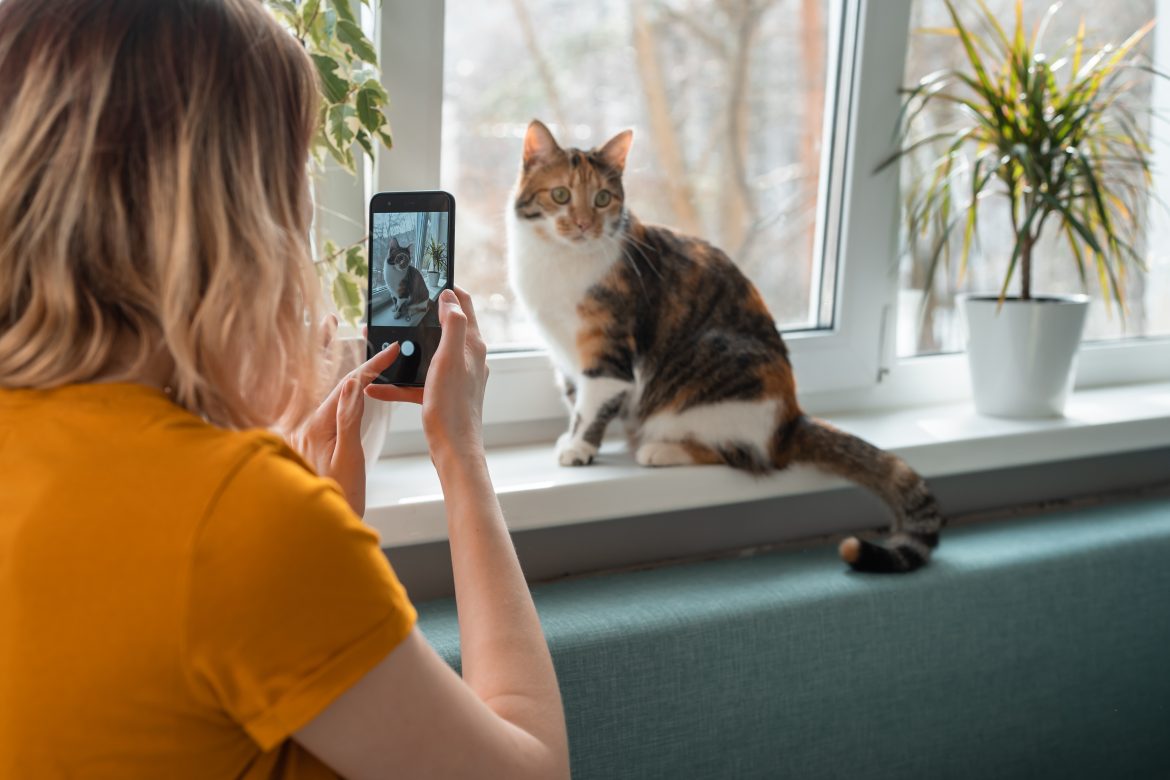When you can’t find the words to describe what’s wrong when you take your pet to the vet, your smartphone camera can do the explaining for you. We explore how to use your camera phone to help with the diagnosis and treatment of your precious pet.
Have you ever needed to describe your pet’s symptoms and you just can’t quite explain it right? It’s in moments like this that we wish our pets could talk!
Because our furry members of the family can’t tell us exactly what is wrong with them, it’s our responsibility to explain it for them – which can be rather tricky! Luckily for us, our camera phones can help and here’s how.
More useful tips: How to Find a Good Vet for Your Dog: 5 Steps
6 ways to use your phone camera before you take your pet to the vet
1. Take pictures of cuts, rashes, abrasions and any other physical issue
It is often the case where you notice something wrong with your pet (like a hot spot), you then book an appointment with your vet and the issue either gets worse or subsides before you get to the actual appointment.
Obviously, if a problem does clear up, it is a good thing. But for persistent issues that are recurring, then it’s good to have images of what the issue looked like when they first began. Taking photos of physical symptoms helps document the progress of cuts and lesions to help you and your vet monitor the site and detect any changes.
2. Take pictures of intermittent issues
It can happen when your pet is acting strangely at home and then seems perfectly fine the moment you get to the vet. Maybe she has a weird limp, is coughing occasionally or does something strange with her lip after eating. These are all things you can capture and show your vet during your appointment.
3. Film seizures
A seizure is a result of abnormal brain activity. Watching your pet experience a seizure can be an incredibly scary thing to witness as your pet will display the following symptoms:
- Convulsing
- Wild thrashing
- Yelping
- Crying
- In some cases, excessive drooling, pooping, and urination
Filming a seizure from start to finish is not always easy to do, but it can help your vet in diagnosing and treating the issue. If you have someone who can help you, then get them to film the seizure while you follow the right steps to ensuring the safety of your pet during it.
4. Take videos of normal and abnormal behaviour
Maybe your pet is pacing around a lot, panting excessively or limping. Any odd behaviour should be captured on video to show your vet.
It will also help to get some footage of normal behaviour as this will give your vet some insight into how your pet behaves on a daily basis to detect any difference. Your vet might also be able to pick up on signs of ageing, vision loss, oral and sleep disorders when watching footage of your pet.
Related: Is Your Dog Acting Strange? Here Are 8 Reasons Why
5. Film behavioural issues
Instead of you trying to act out the strange thing your pet does or how he or she acts, you can take a video! Things like licking the floor, barking at nothing, urinating everywhere – these can all be filmed!
Take photos of your pet’s poop
You read that right – if your pet is experiencing abnormal digestive issues, and she is vomiting or suffering from diarrhoea or even if she is slobbering or snotting – take photos of the excretions. These will be incredibly helpful for your vet when it comes to diagnosing the underlying issue.
Do you know when your next visit to the vet is?
The truth is, you never know when you’ll need to take your pet to the vet, unless for routine care. Going to the vet comes at a cost, which is why you should make sure you have pet insurance to help cover the costs of medical bills.
Better yet, get insured with an insurer like Oneplan Pet Insurance who pays you BEFORE you see the vet. The best part is that a number of their pet insurance plans also cover routine care such as sterilisations and vaccinations.
Keep an eye on your precious pet and make sure you capture anything strange (and even their everyday activities) on your camera phone!
Read next: 10 Warning Signs You Need to Take Your Pet to the Vet
Yours in Not-So-Average Pet Advice,
The Petinsurance.co.za Team



